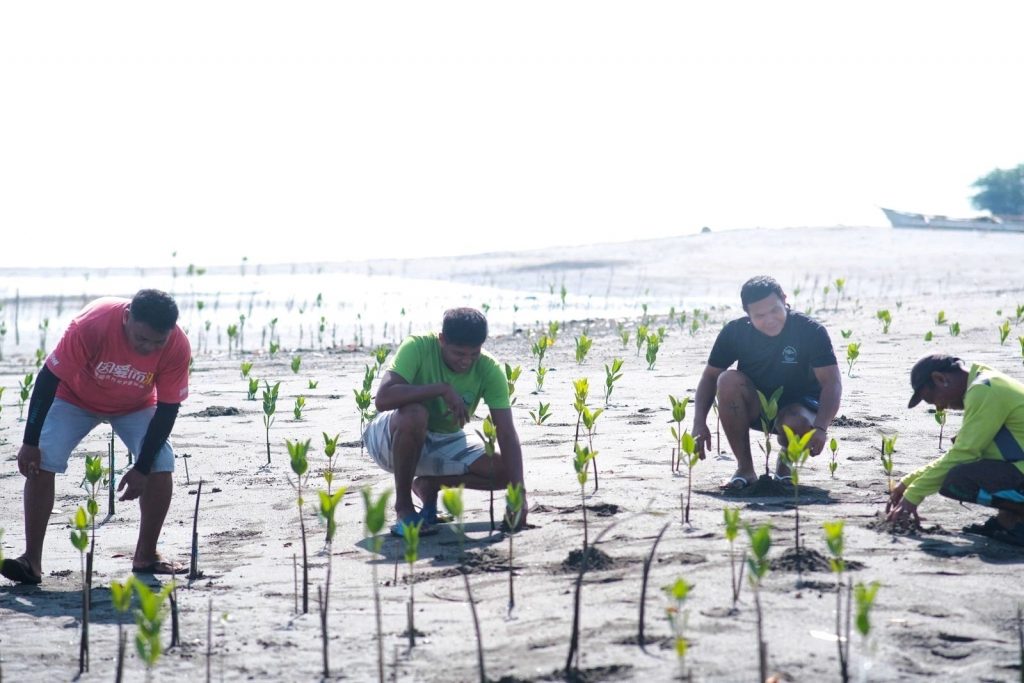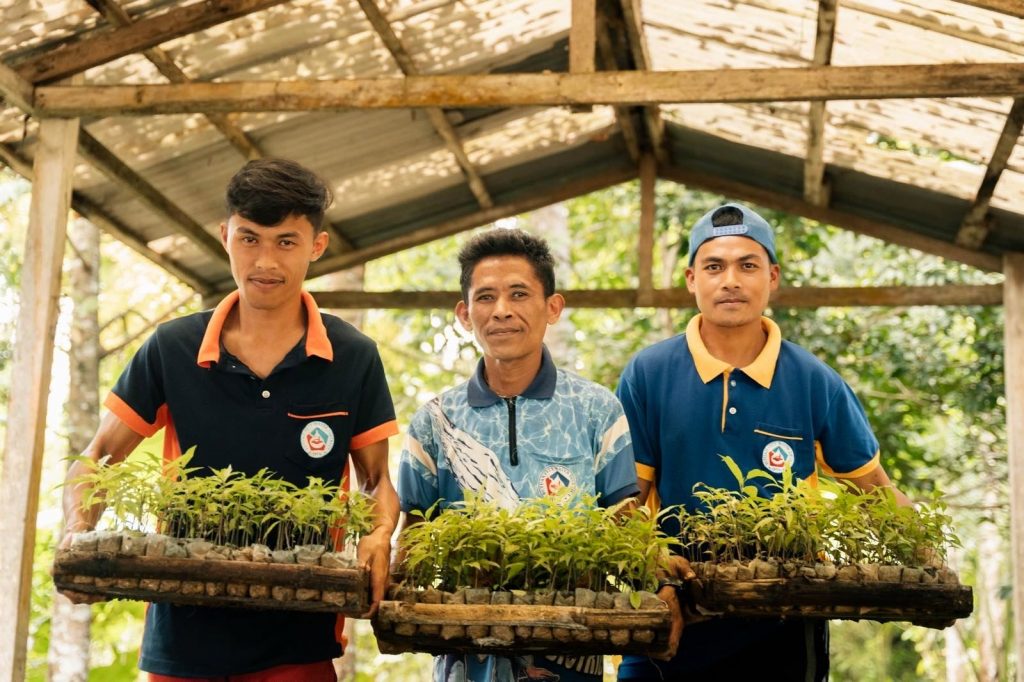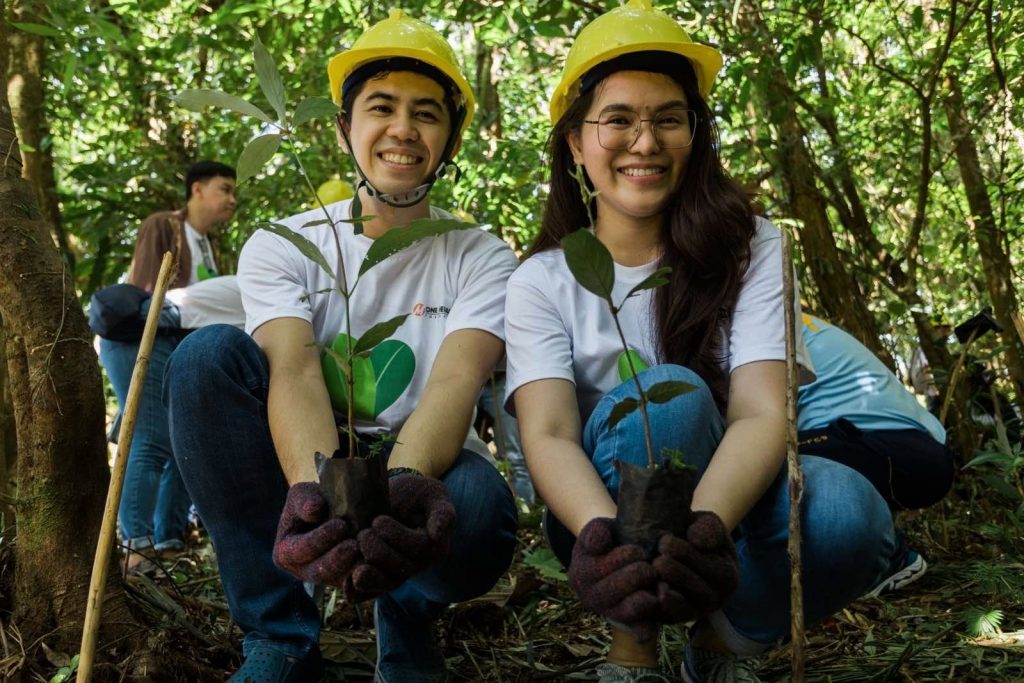How can planting trees lead to thriving communities and even boost local tourism? On World Environment Day, One Meralco Foundation (OMF), the corporate social development arm of the Manila Electric Company (Meralco), leads the charge in making a tangible difference through its One For Trees (OFT) program.
Since its launch in 2019, more than 2.7 million trees have been planted and nurtured through the program, demonstrating how environmental preservation intersects with meaningful socio-economic development.
Spurring tourism through mangrove preservation

OFT’s efforts reached the shores of Kalibo and Ibajay, Aklan, where people’s organizations plant mangroves to preserve and sustain their forests.
In New Buswang in Kalibo, Aklan where high tide floodings hit coastal homes especially during the monsoon season, community members organize to find solutions to prevent strong winds and floodings from destroying their homes and livelihood.
The Kalibo Save the Mangroves Association (KASAMA) was launched to gather members and convince the community to plant trees and bakhawan (local term for “mangroves”) to combat natural calamities. Members who become part of KASAMA have to undergo a training that encourages proactive participation of members in preserving their environment.
“We had to understand the importance of trees in our lives. Learning the processes of properly planting mangroves made us realize that this is a ‘life mission’ for us. That we need to plant mangroves so that our children’s children can enjoy the resources that we are enjoying today,” said KASAMA member Rosalie Teodosio.
To help ensure the project’s longevity, OFT reached out to KASAMA and supported the planting of 100,000 mangroves in the organization’s allocated ecopark area spanning 10 hectares. Because of KASAMA’s resilience, they managed to turn their mangrove area into more than just a buffer zone, but a tourism pitstop for many visitors in Kalibo, Aklan who can marvel at the 220-hectare ecopark during a 20-minute walk with local tour guides explaining the different mangrove species growing. Those with spare time can kayak through the river, flanked by mangrove arrays on each bank. For adventure-seekers, fresh tamilok awaits, a woodworm delicacy which locals eat raw as an appetizer. Because of these efforts, KASAMA was able to welcome about 80,000 visitors from 2022 to 2024.
Further west, in Ibajay, residents also welcome the prospect of tourism at their local mangrove forest, Katunggan It Ibajay (KII). OFT helped Bugtongbato Fisherfolk Association (BFA) and Naisud Mangrove and Aquatic Organization (NAMAO) members plant 50,000 new mangroves in the 20-hectare property of the KII. Members of BFA and NAMAO were tapped to preserve and sustain these forests which serve as crucial habitat to the community’s fish reserves.
Members of these organizations saw the need to maintain the mangrove forests to protect their spawning sites. “We now have a clear guide on mangrove species and how these contribute to the whole fisheries ecosystem. It was clear to us that we need to take care of the mangroves to protect our livelihood,” shared NAMAO member Glenzy Bernardino.
From managing the forest, they transitioned to welcoming guests to their mangrove forest and boardwalk. Members share their knowledge to entertain and educate tourists, which in turn help hone their English communication skills. This helps when they entertain foreign guests from Boracay island who also visit their forests.
“More than the extra income from tour guiding and OFT’s payout from planting mangroves, I am happy with my self-improvement. I have gained confidence not just in my knowledge of mangroves but also relating to different people from all walks of life who are equally interested in how we manage this mangrove forest,” Bernardino added.
More than protecting homes and livelihoods, each mangrove project contributes to the larger mitigation of climate change. OFT mediated by creating indirect but significant and meaningful opportunities for the people of Kalibo and Ibajay, Aklan.
Strengthening the indigenous peoples’ role in reforestation while ensuring productive livelihood

In Butuan City, Agusan del Norte, reforestation efforts in the Taguibo River Watershed Forest Reserve actively engage the indigenous Manobo community, creating opportunities to enhance their livelihoods and generate sustainable income.
Abaca fiber is one of the primary products of Barangay Anticala, providing employment to many local residents.
Roland Mabandos, a member of Anticala Tribal Council of Elders and Leader Association, Inc. (ATRCELAI) said, “We plant abaca for livelihood. As it grows to its viable growth, we process it and sell it to the local buyers. That is why we really pushed for OFT to include abaca in our planting mix. Abaca planting is feasible in our area because of our cold climate.”
Because of this, OFT and Butuan City Water District (BCWD) partnered to design the reforestation program according to the grassroots needs. More than 48,000 native and fruit trees were intercropped alongside abaca by ATRCELAI and Anticala Watershed Farmers Producer Cooperative (AWFPC).
Planting native trees alongside abaca has benefited the Manobo and other farmers, as the shade provided by the trees helps abaca thrive in cooler temperatures. But aside from the boost in livelihood, the big-picture impact of reforestation never went out of sight for AWFPC and ATRCELAI members.
“Our priority is always to protect the Taguibo Watershed. We stay true to our commitment that our planting is for the benefit of the river,” Glen Andojoyan, member of AWFPC, said.
Engaging partners and volunteers in reforestation efforts

The University of the Philippines Laguna-Quezon Land Grant (LQLG) in Siniloan, Laguna is one of the many reforestation sites of OFT. Forming the southern part of the Sierra Madre, the forest is a sustainable buffer that challenges the tropical cyclones that regularly pummel the Philippines during rainy season. The reforestation site is now home to 11,149 new trees planted in 2024, adding to a total of 185,649 trees that OFT planted in the area.
However, tree planting is only the first step of a process. Engaging partners to become stewards of reforestation, as well as volunteer education, contributed to the success of these efforts.
The LQLG, some 75 kilometers east of Pasig City, is an accessible area allowing OMF partners to engage with OFT through employee volunteerism. In 2024, around 170 volunteers trekked up the land grant to plant native trees.
For MPower Energy Engineer Jayster Abainza, being part of the tree-planting activity means raising awareness on the importance of getting involved in environmental conservation practices. “Though it’s a small step, it’s a step in the right direction toward a greener future. Together, let’s keep defending the environment and building a sustainable future for all.”
OMF’s partner in LQLG, Fostering Education and Environment for Development, Inc. (FEED), received support in pushing their community-based forestry approach with the aim to rehabilitate the LQLG through awareness and action on environmental protection and ensure alternative livelihood sources for local communities.
“The sustainable forestry program takes its core from the people as guardians and stewards of the forest. With the many volunteers joining OFT here in the land grant, we were able to extend awareness for climate action and how through something as simple as planting trees, we meet a complex issue with a nature-based solution,” said Anne Marie Bakker, Director for Partnerships of FEED.
The One For Trees program, which started in 2019, has planted and nurtured 2,727,433 trees to date. It also has active partnerships and plantation sites in Laguna, as well as in San Miguel and Norzagaray in Bulacan, various LGUs in the Province of Bohol, Kalibo and Ibajay in Aklan, Butuan in Agusan del Norte, Del Carmen in Surigao del Norte, and Pangantucan in Bukidnon.














